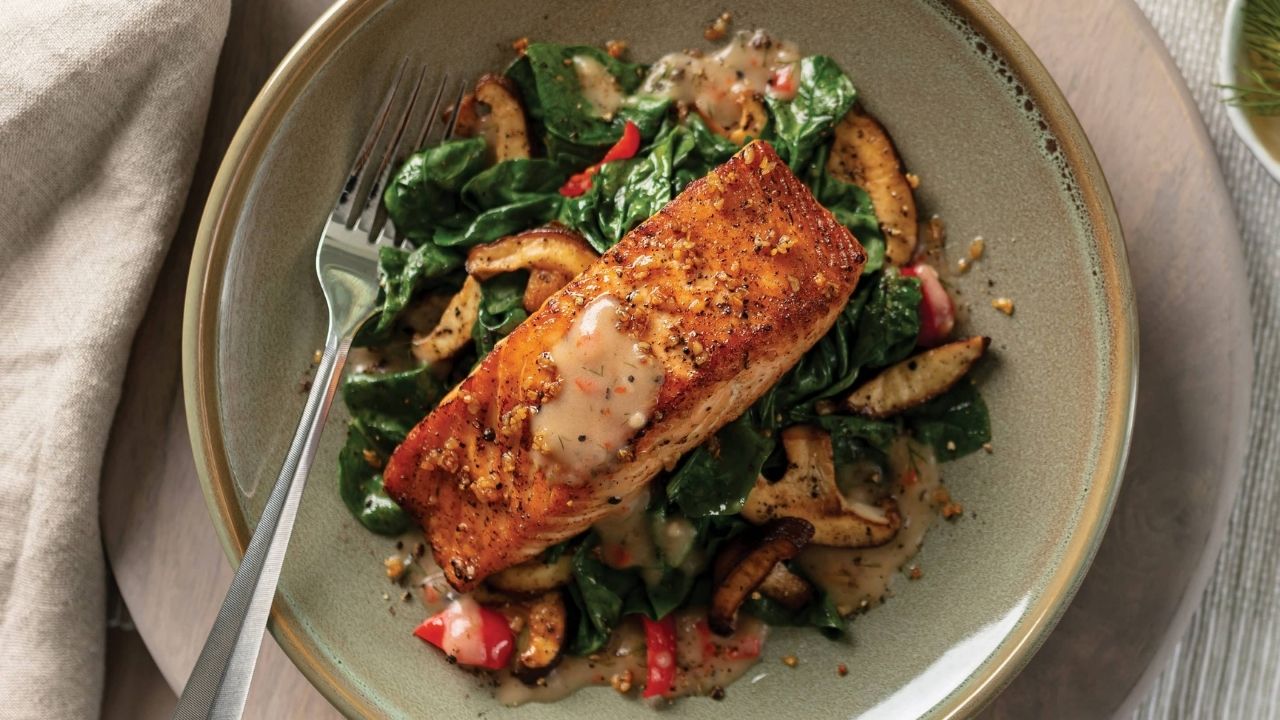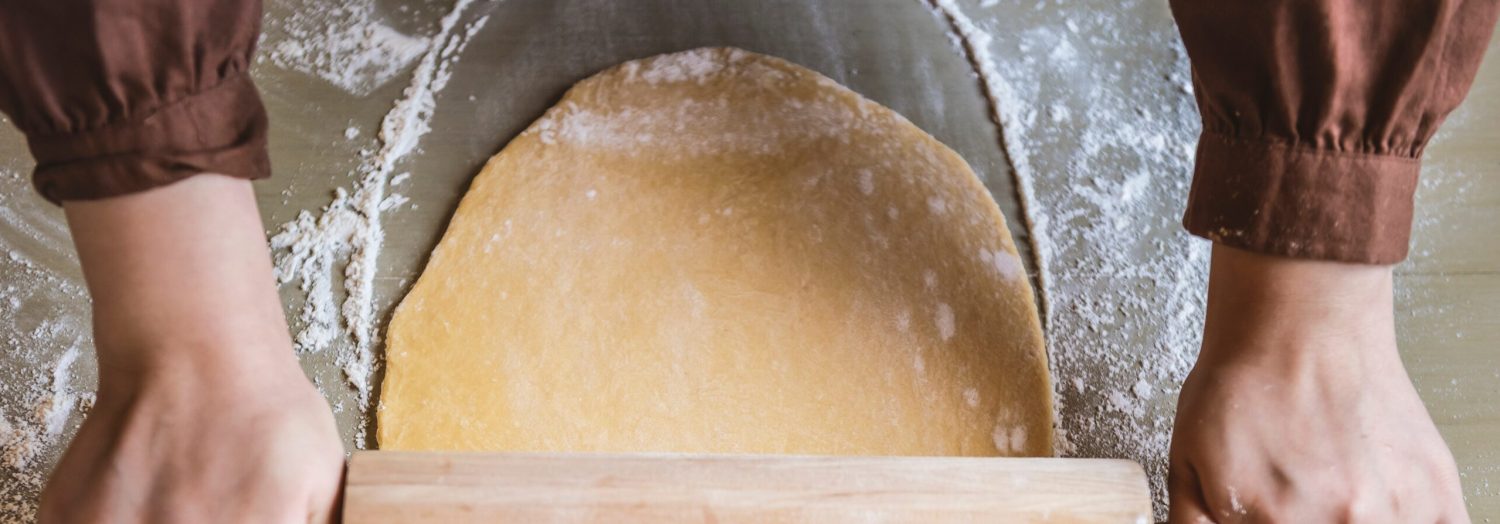This delightful dish combines the rich flavors of salmon with the zesty brightness of lemon and the fresh, aromatic touch of dill. It's a simple yet elegant recipe that is perfect for a weeknight dinner or a special occasion. The preparation is straightforward, making it accessible even for novice cooks.
While most of the ingredients in this recipe are common, you might need to pay special attention to the fresh dill. It's not always a staple in every household, so make sure to pick it up from the produce section of your supermarket. Fresh salmon fillets are also essential for the best flavor and texture.

Ingredients for Salmon with Lemon and Dill Recipe
Salmon: A rich, flavorful fish that serves as the main protein in this dish.
Olive oil: Adds moisture and helps to crisp the edges of the salmon.
Salt: Enhances the natural flavors of the salmon and other ingredients.
Black pepper: Adds a mild heat and depth of flavor.
Lemon: Provides a zesty, citrusy brightness that complements the richness of the salmon.
Fresh dill: Adds a fresh, aromatic touch that pairs beautifully with the lemon and salmon.
Technique Tip for This Recipe
When preparing salmon, ensure that the fillets are of even thickness to promote uniform cooking. If some pieces are thicker, consider slicing them horizontally to create a more consistent size. This helps prevent overcooking the thinner parts while waiting for the thicker sections to cook through. Additionally, for an extra burst of flavor, you can marinate the salmon in olive oil, lemon juice, and dill for about 30 minutes before baking. This allows the flavors to penetrate deeper into the fish, enhancing the overall taste.
Suggested Side Dishes
Alternative Ingredients
salmon - Substitute with trout: Trout has a similar texture and flavor profile, making it a great alternative to salmon.
salmon - Substitute with arctic char: Arctic char has a mild flavor and a similar fatty texture, making it a good substitute for salmon.
olive oil - Substitute with grapeseed oil: Grapeseed oil has a neutral flavor and a high smoke point, suitable for cooking fish.
olive oil - Substitute with avocado oil: Avocado oil has a mild flavor and is rich in healthy fats, making it a good alternative to olive oil.
salt - Substitute with soy sauce: Soy sauce adds a salty flavor along with a bit of umami, enhancing the overall taste of the dish.
salt - Substitute with sea salt: Sea salt can provide a different texture and a slightly different flavor profile compared to regular table salt.
black pepper - Substitute with white pepper: White pepper has a milder flavor and can be used if you prefer a less pungent taste.
black pepper - Substitute with cayenne pepper: Cayenne pepper adds a bit of heat and spice, offering a different flavor dimension to the dish.
lemon - Substitute with lime: Lime provides a similar acidic and citrusy flavor, making it a good alternative to lemon.
lemon - Substitute with orange: Orange adds a sweeter citrus flavor, which can complement the fish in a different way.
fresh dill - Substitute with fresh parsley: Fresh parsley offers a mild, slightly peppery flavor that can work well in place of dill.
fresh dill - Substitute with fresh tarragon: Fresh tarragon has a slightly sweet and anise-like flavor, providing a unique twist to the dish.
Other Alternative Recipes Similar to This
How to Store or Freeze This Dish
- Allow the salmon to cool completely before storing. This prevents condensation, which can make the fish soggy.
- Transfer the cooled salmon fillets to an airtight container. If you have multiple fillets, place a piece of parchment paper between each to prevent sticking.
- Store the container in the refrigerator if you plan to consume the salmon within 3 days. For longer storage, proceed to freezing.
- To freeze, wrap each salmon fillet tightly in plastic wrap or aluminum foil. This helps to maintain the flavor and texture.
- Place the wrapped fillets in a freezer-safe ziplock bag. Remove as much air as possible before sealing to prevent freezer burn.
- Label the bag with the date of freezing. This ensures you use the salmon within 2-3 months for optimal taste.
- When ready to eat, thaw the salmon in the refrigerator overnight. Avoid thawing at room temperature to maintain food safety.
- Reheat the salmon in a preheated oven at 350°F (175°C) for about 10-15 minutes, or until warmed through. Alternatively, you can reheat it in a skillet over medium heat.
- Garnish with fresh dill and a squeeze of lemon juice before serving to refresh the flavors.
How to Reheat Leftovers
Oven Method: Preheat your oven to 275°F (135°C). Place the salmon on a baking sheet lined with parchment paper. Cover the salmon with aluminum foil to retain moisture. Heat for about 15 minutes or until the salmon is warmed through. This method helps maintain the salmon's texture and flavor.
Stovetop Method: Heat a non-stick skillet over medium-low heat. Add a small amount of olive oil or butter to the pan. Place the salmon fillets in the skillet, cover with a lid, and heat for about 5-7 minutes. Flip the fillets halfway through to ensure even reheating. This method is quick and helps keep the salmon moist.
Microwave Method: Place the salmon on a microwave-safe plate. Cover it with a microwave-safe lid or a damp paper towel to prevent drying out. Microwave on medium power for 1-2 minutes, checking every 30 seconds to avoid overcooking. This method is convenient but may slightly alter the texture of the salmon.
Steaming Method: Fill a pot with a small amount of water and bring it to a simmer. Place the salmon on a steaming rack or in a steamer basket. Cover and steam for about 5-7 minutes or until the salmon is heated through. This method helps retain the salmon's moisture and delicate flavor.
Sous Vide Method: Preheat your sous vide machine to 130°F (54°C). Place the salmon in a vacuum-sealed bag or a resealable plastic bag using the water displacement method. Submerge the bag in the water bath and heat for about 20-30 minutes. This method ensures the salmon is evenly reheated without overcooking.
Best Tools for This Recipe
Oven: Used to bake the salmon fillets at the specified temperature.
Baking sheet: Provides a flat surface to place the salmon fillets on for baking.
Aluminum foil: Lines the baking sheet to prevent sticking and make cleanup easier.
Knife: Used to slice the lemon and chop the fresh dill.
Cutting board: Provides a safe surface for slicing the lemon and chopping the dill.
Measuring spoons: Used to measure the olive oil, salt, and black pepper accurately.
Tongs: Useful for handling the salmon fillets without breaking them.
Serving platter: Used to present the cooked salmon fillets attractively.
How to Save Time on Making This Dish
Preheat the oven early: Start preheating your oven while you prepare the ingredients to save time.
Use parchment paper: Line the baking sheet with parchment paper instead of aluminum foil for easier cleanup.
Prepare ingredients in advance: Chop the dill and slice the lemon ahead of time to streamline the cooking process.
Season in one go: Mix olive oil, salt, and black pepper in a bowl and brush it over the salmon fillets to save time.
Batch cooking: Cook extra salmon fillets and store them for future meals to save time on busy days.

Salmon with Lemon and Dill
Ingredients
Main Ingredients
- 4 fillets Salmon about 6 oz each
- 2 tablespoon Olive oil
- 1 teaspoon Salt
- 1 teaspoon Black pepper
- 1 lemon Lemon sliced
- 2 tablespoon Fresh dill chopped
Instructions
- Preheat your oven to 375°F (190°C).
- Line a baking sheet with aluminum foil.
- Place the salmon fillets on the baking sheet.
- Drizzle olive oil over the salmon fillets.
- Season with salt and black pepper.
- Place lemon slices on top of each fillet.
- Sprinkle chopped dill over the salmon.
- Bake in the preheated oven for 20 minutes, or until the salmon is cooked through.
Nutritional Value
Keywords
Suggested Appetizers and Desserts for This Recipe
More Amazing Recipes to Try 🙂
- BBQ Chicken Wings Recipe45 Minutes
- City Chicken Recipe1 Hours
- Spicy Thai Peanut Sauce Recipe15 Minutes
- Fried Mac and Cheese Balls Recipe30 Minutes
- Air Fryer Chicken Taquitos Recipe25 Minutes
- Pineapple Bread Recipe1 Hours 15 Minutes
- Post-Workout Shake Recipe5 Minutes
- Portuguese Kale Soup Recipe1 Hours

Leave a Reply